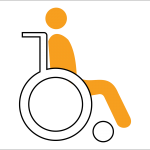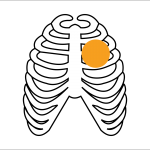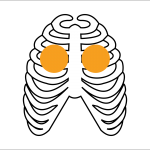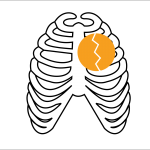Conditions Treated

Conditions
R3 Stem Cell offers a disease awareness library of conditions, which you can learn a lot about by clicking below. Currently, R3 Stem Cell has received Institutional Review Board (IRB) for the investigation of certain condition categories. You can read about the study on ClinicalTrials.gov here:
SAFETY AND CLINICAL OUTCOMES WITH AMNIOTIC AND UMBILICAL CORD TISSUE THERAPY

ACHILLES
TENDONITIS
ACHILLES TENDONITIS
Achilles tendon is the connective tissue that joins the muscles at the back of the leg to the heels. Swelling and pain in the Achilles tendon is known as Achilles tendinitis.
Read More

ACHILLES TEARS
ACHILLES TEARS
The Achilles tendon, the largest tendon in the body, joins the calf muscles to the heel bone. This tendon enables one to walk, run and jump. Achilles tendon tears happen when the tendon stretches beyond its capacity.
Read More

ALS
ALS
Amyotrophic lateral sclerosis (ALS), also known as Lou-Gehrig’s disease, is a neurodegenerative condition characterized by progressive degeneration of the motor nerves. According to statistics, the worldwide incidence of the disease is 2.5 per 100,000 persons.
Read More

ACHILLES
TENDONITIS
ACHILLES TENDONITIS
Achilles tendon is the connective tissue that joins the muscles at the back of the leg to the heels. Swelling and pain in the Achilles tendon is known as Achilles tendinitis.
Read More

ACHILLES
TENDONITIS
ACHILLES TENDONITIS
Achilles tendon is the connective tissue that joins the muscles at the back of the leg to the heels. Swelling and pain in the Achilles tendon is known as Achilles tendinitis.
Read More

ACHILLES
TENDONITIS
ACHILLES TENDONITIS
Achilles tendon is the connective tissue that joins the muscles at the back of the leg to the heels. Swelling and pain in the Achilles tendon is known as Achilles tendinitis.
Read More

ANTI AGING
ANTI AGING
With the increasing amount of elderly people in the US growing at a hefty rate, there will be a significant impact on the uptick in age-related diseases and healthcare costs.
Read More

ARTHRITIS
ARTHRITIS
Arthritis is characterized by stiffness, swelling and pain in the joints. The joints in the body serve as connections between bones. Degeneration of the joints due to arthritis leads to reduced flexibility and mobility. Some cases of arthritis can cause damage to other organs as well, such as the eyes and skin.
Read More

ARTHRITIS
EXTREMITIES AND SPINE
ARTHRITIS EXTREMITIES AND SPINE
Arthritis is characterized by stiffness, swelling and pain in the joints. The joints in the body serve as connections between bones. Degeneration of the joints due to arthritis leads to reduced flexibility and mobility.
Read More

AUTISM
AUTISM
Autism Spectrum Disorder is a neurological disorder that affects the way a person interacts with others, inhibiting their social interaction, communication, and behavioral development.
Read More

AUTOIMMUNE
DISEASES
AUTOIMMUNE DISEASES
Autoimmune diseases are leading causes of death among young and mid-aged women in America. For rheumatoid arthritis, the rate is 20 cases per 100,000 person-years. Grave disease effects 500 per 100,000 persons. …
Read More

BACK PAIN
BACK PAIN
Back pain, a common problem experienced by most people, is characterized by muscle ache, shooting pain, limited flexibility of the back and difficulty in standing.
Read More

CARDIOMYOPATHY
CARDIOMYOPATHY
Heart failure (HF) affects millions of individuals worldwide, both genders, and all races. HF affects 5 million Americans and is a condition where the heart progressively weakness, unable to produce enough blood to meet the body’s demands.
Read More

CARPAL
TUNNEL SYNDROME
CARPAL TUNNEL SYNDROME
Carpal tunnel syndrome is a condition that develops when the median nerve gets compressed at the wrist. Symptoms include weakness or numbness in the palm and wrist, and radiating pain in the arm.
Read More

CARTILAGE
DEFECTS
CARTILAGE DEFECTS
Cartilage is the cushioning tissue found in between bones. It provides lubrication to the joint and supports joint stability, flexibility and range of mobility.
Read More

COPD
COPD
Chronic obstructive pulmonary disease (COPD) is a medical condition that affects around 4% of the general population. Bronchitis, emphysema, cystic fibrosis, and asthma all can contribute to COPD.
Read More

CRPS/RSD
CRPS/RSD
Complex regional pain syndrome (CRPS), or reflex sympathetic dystrophy (RSD), is a condition characterized by trophic skin changes, swelling, bone loss, contracture, vasomotor and sudomotor instability, as well as allodynic pain.
Read More

DEGENERATIVE DISC DISEASE
DEGENERATIVE DISC DISEASE
A closer looks at the vertebral column will reveal that between adjacent vertebrae there exists a disc, acting as a cushion. The disc acts as a shock absorber, and the mechanical stresses of movements are transferred from the bones to the disc.
Read More

DIABETES
DIABETES
The burden of diabetes worldwide is increasing, and this disease contributes to low quality of life, human suffering, morbidity, and mortality. New drugs are being developed, such as glucagon-like peptide mimetics and glucose transporter inhibitors.
Read More

ELBOW
TENDONITIS
ELBOW TENDONITIS
Elbow tendinitis is caused by damage to the elbow tendons, and is classified as tennis elbow or golfer’s elbow, depending on the site of tenderness. Tendons are tissues that connect muscle to bone. People who perform repetitive gripping activities are susceptible to this condition.
Read More

ERECTILE
DYSFUNCTION
ERECTILE DYSFUNCTION
Erectile dysfunction (commonly abbreviated as ED, and sometimes referred to as impotence) can show up unexpectedly in times of stress and duress, or frequently manifest and cause problems in the patient’s sex life.
Read More

FAILED BACK
SURGERY SYNDROME
FAILED BACK SURGERY
SYNDROME
Failed back surgery syndrome (FBSS), also known as failed back syndrome (FBS), refers to a condition of continued pain after back or spinal surgery. The success rate of spinal surgery can be quite high;
Read More

FRACTURES
FRACTURES
A fracture is a broken bone, and may be caused by accidents, injuries, overuse, bone disorders and osteoporosis. Symptoms of a fracture include misshapen limbs, swelling, bleeding, intense pain and difficulty moving the affected limb.
Read More

HAND AND
WRIST ARTHRITIS
HAND AND WRIST ARTHRITIS
Arthritis affects the joints of the body, and can be classified into several types based on the etiology of disease—osteoarthritis, rheumatoid arthritis, to name a few. Osteoarthritis (OA) is a progressive deterioration of articular cartilage cushioning the ends of bones due to wear and tea
Read More

HEADACHES
FAILED BACK SURGERY
SYNDROME
A headache is characterized by pain in the head, scalp or neck region. Common causes of headache include stress, depression and injur
Read More

HEART FAILURE
HEART FAILURE
Heart failure (HF) affects millions of individuals worldwide, both genders, and all races. HF affects 5 million Americans, and is a condition where the heart progressively weakness, unable to produce enough blood to meet the body’s demands.
Read More

HIP ARTHRITIS
HIP ARTHRITIS
Arthritis, or degeneration/inflammation of the joints, can affect the hip joint. It is estimated by a 2010 survey that 22% of the US population have some form of arthritis. This condition is also reported to result in compromised work-life in a third of all working-age arthritis patients.
Read More

INTERSTITIAL CYSTITIS
INTERSTITIAL CYSTITIS
Interstitial cystitis is a condition characterized by chronic pain and discomfort that affects the bladder. It is also called bladder pain syndrome, and not much is known about the condition
Read More

KIDNEY FAILURE
KIDNEY FAILURE
Chronic kidney disease (CKD) and kidney failure are common conditions, associated with 12% of cardiovascular and all-cause mortality. End stage renal disease (ESRD), or kidney failure, accounts for 6% of the Medicare spending in the United States.
Read More

KNEE ARTHRITIS
KNEE ARTHRITIS
Knee arthritis is characterized by inflammation of the knee, leading to pain, swelling and stiffness. According to the National Health Interview Survey in 2012, more than 51 million people in the US are reported to have some form of arthritis.
Read More

KNEE
LIGAMENT INJURIES
KNEE LIGAMENT INJURIES
The knee, the largest joint in the body, plays a vital role in movement. The knee is composed of three bones—the thigh bone (femur), shinbone (tibia) and kneecap (patella).
Read More

KNEE
TENDONITIS
KNEE TENDONITIS
The knee is an important joint of the body. Repeated injury or the overuse of the knee, such as during certain types of sports, may lead to stress on the tendons of the knee. Repeated stress causes tears in the tendon, and gradually weakens the structure, resulting in inflammation and pain.
Read More

LICHEN
SCLEROSUS
LICHEN SCLEROSUS
Lichen sclerosus is a not so common skin condition that commonly affects the skin of the genital and perianal regions. This condition can also develop on the skin of the torso, upper arms, breasts or any other parts of the body, although, very less commonly
Read More

LYME
DISEASE
LYME DISEASE
Lyme disease is an infectious disease transmitted through tick bites. The deer tick is the most common one to harbor the Borrelia burgdorferi organism that is associated with Lyme disease.
Read More

MIGRAINES
MIGRAINES
A migraine headache is characterized by severe throbbing or pulsating pain in the head. Migraine headache is also associated with nausea, visual disturbances and sensitivity to light and sound.
Read More

MULTIPLE
SCLEROSIS
MULTIPLE SCLEROSIS
Multiple sclerosis is a progressive disease of the Central Nervous System (CNS). It causes demyelination of the covers of the nerves in the brain and spinal cord
Read More

NECK
PAIN
NECK PAIN
Neck pain is a common condition, and may be the result of a variety of different causes. Neck pain may arise from injuries to the structures of the neck, such as muscles, nerves, bones and intervertebral discs.
Read More

NEUROPATHY – PERIPHERAL
AND DIABETIC
NEUROPATHY – PERIPHERAL
AND DIABETIC
Neuropathy is a general term that is used to describe a disease affecting the nerves in the body. There are significant differences between neuropathy and other diseases that affect the nerves
Read More

PARKINSON’S
DISEASE
PARKINSON’S DISEASE
Parkinson’s disease (PD) is a prevalent neurodegenerative disorder that affects 1% of the general population over the age of 60 years. It is a progressive condition characterized by loss of dopaminergic neurons in the region of the ventral midbrain, and nerves of the central and peripheral nervous systems.
Read More

PELVIC
PAIN
PELVIC PAIN
Pelvic pain is experienced at the bottom of the abdomen and pelvis. Typical symptoms of pelvic pain include dull or sharp pain that may radiate out towards the lower back, buttocks or thighs.
Read More

PHANTOM
LIMB PAIN
PHANTOM LIMB PAIN
Phantom limb pain refers to the pain sensation experienced following amputation of a limb, wherein the body feels as if the missing limb is still existing.
Read More

PLANTAR
FASCIITIS
PLANTAR FASCIITIS
Plantar fasciitis is caused by the inflammation of the plantar fascia, a supporting tissue that connects the heel bone to the toe and runs across the bottom of the feet.
Read More

POSTHERPETIC
NEURALGIA
POSTHERPETIC NEURALGIA
Postherpetic neuralgia is a painful condition that is caused by the residual effects of shingles. It usually occurs after someone has had shingles, and the pain is confined to peripheral nerves (nerves outside the central nervous system).
Read More

POSTLAMINECTOMY
SYNDROME
POSTLAMINECTOMY
SYNDROME
Phantom limb pain refers to the pain sensation experienced following amputation of a limb, wherein the body feels as if the missing limb is still existing.
Read More

PUDENDAL
NEURALGIA
PUDENDAL NEURALGIA
Pudendal neuralgia a medical condition characterised by long term pain and discomfort. It is called pudendal neuralgia because the pain originates from damage or injury to the pudendal nerve.
Read More

RHEUMATOID
ARTHRITIS
RHEUMATOID ARTHRITIS
The immune system is responsible for protecting the body against harmful foreign agents. However, autoimmune disorders can cause the body’s immunity to attack its own healthy cells.
Read More

ROTATOR CUFF
TENDONITIS
ROTATOR CUFF TENDONITIS
Rotator cuff tendinitis, also known as impingement syndrome, is an inflammation of the tendons and muscles of the shoulder joint.
Read More

ROTATOR CUFF
TEARS
ROTATOR CUFF TEARS
The shoulder joint is a ball-and-socket joint, consisting of three bones: the upper arm bone (humerus), the shoulder blade (scapula), and the collarbone (clavicle).
Read More

SACROILIAC
JOINT PAIN
SACROILIAC JOINT PAIN
The sacroiliac joint represents the area where the sacrum and the iliac bones meet. The sacrum is the base of the spine, and consists of 5 vertebrae fused together.
Read More

SCIATICA
SCIATICA
The sciatic nerve passes out from the lower back into the hips, buttocks and then through each leg. Sciatica is when pain is experienced along the pathway of the sciatic nerve, and typically affects one side of the body.
Read More

SHOULDER AND
ELBOW ARTHRITIS
SHOULDER AND ELBOW ARTHRITIS
Elbow arthritis occurs due to worn out cartilage, resulting from injury or regular wear and tear. The elbow joint consists of matched joint surfaces with strong supporting ligaments.
Read More

SACROILIAC
JOINT PAIN
SACROILIAC JOINT PAIN
The sacroiliac joint represents the area where the sacrum and the iliac bones meet. The sacrum is the base of the spine, and consists of 5 vertebrae fused together.
Read More

SCIATICA
SCIATICA
The sciatic nerve passes out from the lower back into the hips, buttocks and then through each leg. Sciatica is when pain is experienced along the pathway of the sciatic nerve, and typically affects one side of the body.
Read More

SHOULDER AND
ELBOW ARTHRITIS
SHOULDER AND ELBOW ARTHRITIS
Elbow arthritis occurs due to worn out cartilage, resulting from injury or regular wear and tear. The elbow joint consists of matched joint surfaces with strong supporting ligaments.
Read More

SPINAL ARTHRITIS
(FACET SYNDROME)
SPINAL ARTHRITIS
(FACET SYNDROME)
Facet syndrome, also known as spinal arthritis, is characterized by inflamed facet joints. These joints provide links between adjoining vertebrae, and are important for smooth movement, posture and balance.
Read More

SPINAL
STENOSIS
Spinal stenosis is caused by the narrowing of spinal space, leading to pressure on the spinal cord and nerve roots.
SPINAL STENOSIS
The sciatic nerve passes out from the lower back into the hips, buttocks and then through each leg. Sciatica is when pain is experienced along the pathway of the sciatic nerve, and typically affects one side of the body.
Read More

STROKE
STROKE
Ischemic stroke, also called a cerebrovascular accident, is caused by interrupted or decreased blood supply to a portion of the brain.
Read More

TENDONITIS
TENDONITIS
Tendons are thick fibrous connective tissues that attach muscles to bones, and thereby help support movement.
Read More

TENDONITIS AND TEARS
TENDONITIS AND TEARS
The Achilles tendon is the strongest and largest tendon (fibrous cord) that connects the calf muscles to the heel bone. Achilles tendonitis is an injury resulting from excessive or repetitive stress on the ankle generally due to some strenuous activity.
Read More

TENSION
HEADACHES
TENSION
HEADACHES
A common type of headache is the tension headache, which is characterized by mild to moderate diffuse pain.
Read More

TRIGEMINAL
NEURALGIA
TRIGEMINAL NEURALGIA
The 5th cranial nerve, known as the trigeminal nerve, covers wide areas in the brain. The trigeminal nerve conducts sensations from the face to the brain using three braches—the ophthalmic, maxillary and mandibular branches.
Read More
welcome to r3 international
Call to Schedule Consultation at Over 35 Centers Nationwide!





